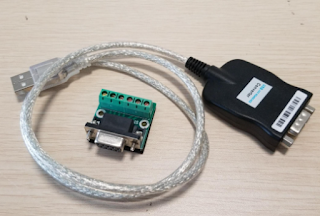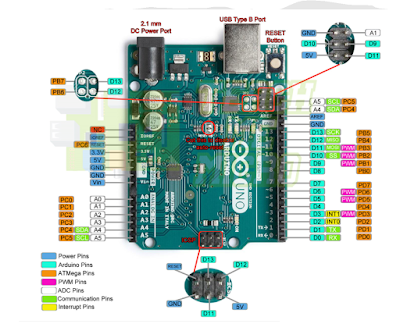Saturday, May 1, 2021
Fundamentals of RS-422: Serial Data Standard (Basics)
Thursday, April 29, 2021
RS-232 STANDARDS, PIN DETAILS, BAUD RATE AND CABLE LENGTH
RS-232 INTERFACE
Communication Standards
Maximum Baud Rate and Cable Length
3. Moxa UPort 1110 1 Port RS232 to USB Converter 2.0 Adapter
4. DTECH USB to RS422 RS485 Serial Port Converter Adapter Cable with FTDI Chip Supports Windows 10, 8, 7, XP and Mac (1.2m)
5. RS232 to RS485 / RS422 Serial Communication Data Converter Adapter Mini-Size
Wednesday, April 28, 2021
Arduino UNO for Middle school, High school, and University Students
ARDUINO UNO
The Arduino UNO is the perfect board for beginners who want to learn about electronics and programming. The UNO is the most stable board you can start with if this is your first time tinkering with the platform. The Arduino UNO is the most famous and well-documented board in the Arduino family.
FUTURE ENGINEERS, SCIENTISTS AND ARTISTS SHOULD BE EMPOWERED
Arduino Education develops the next wave of STEAM services to support students as they progress through middle school, high school, and university.
Arduino Uno R3
Arduino Uno R3 Specifications
The Arduino Uno R3 board includes the following specifications.
- Microcontroller ATmega328P
- Input voltage span from 7V to 12V
- The operating voltage of the Arduino is 5V
- Digital input and output pins
- Analog Input pins
- DC Current used for 3.3V Pin is 50 mA
- DC Current for each I/O Pin is 20 mA
- SRAM is 2 KB
- ROM Memory is 32 KB
- boot loader memory 0.5 KB
- EEPROM is 1 KB
- In-Built LED
- The clock speed is 16 MHz
- Arduino board weight is ~25 g
- Dimensions of the Board are 68.6 mm X 53.4 mm
The Arduino Uno R3 board includes the following specifications.
- Microcontroller ATmega328P
- Input voltage span from 7V to 12V
- The operating voltage of the Arduino is 5V
- Digital input and output pins
- Analog Input pins
- DC Current used for 3.3V Pin is 50 mA
- DC Current for each I/O Pin is 20 mA
- SRAM is 2 KB
- ROM Memory is 32 KB
- boot loader memory 0.5 KB
- EEPROM is 1 KB
- In-Built LED
- The clock speed is 16 MHz
- Arduino board weight is ~25 g
- Dimensions of the Board are 68.6 mm X 53.4 mm
Arduino UNO Pinout Diagram
Digita Channel
Analog Channel
Power Pins
3. UNO Robotics Kit compatible with Arduino IDE
4. Multipurpose Starter Kit for Arduino IDE- NODEMCU (IOT) - Robotics For Beginners
5. Quad Store LEVEL-2 kit with RFID and bluetooth compatible with Arduino IDE and Uno R3

















